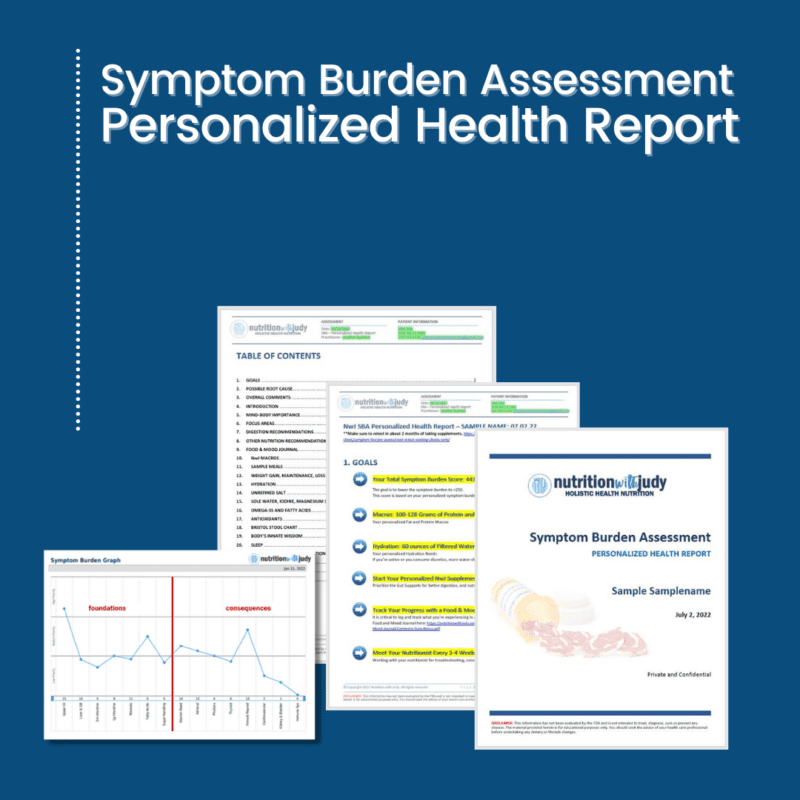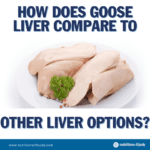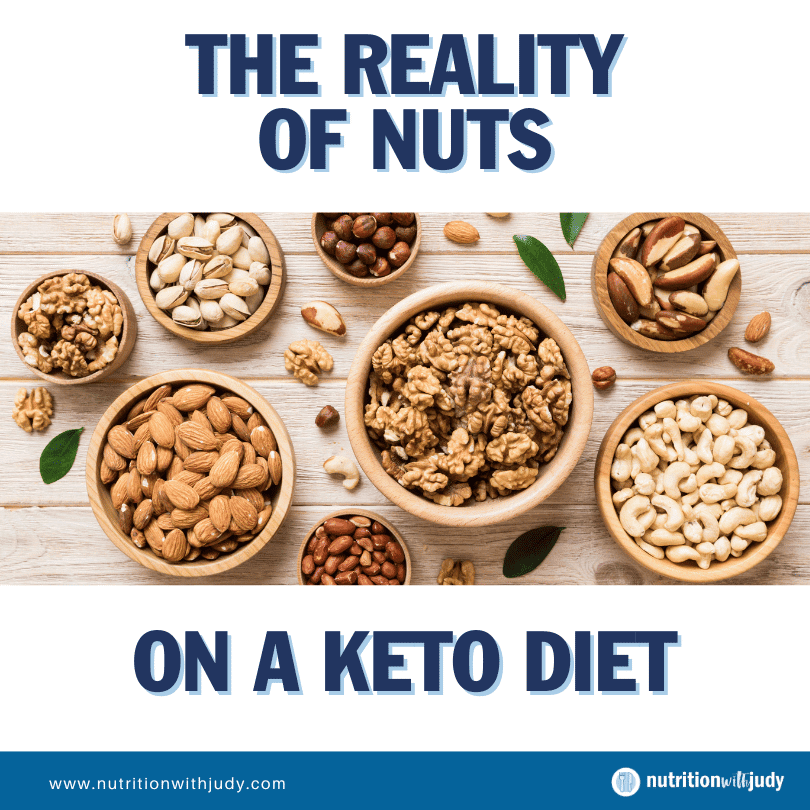

The Reality of Nuts On a Keto Diet


When considering nuts on a keto diet, it’s important to look deeper into their nutritional profiles and how they fit into the strict macronutrient ratios required by the ketogenic lifestyle. Nuts, although rich in fats, also contain carbohydrates, which can accumulate quickly and potentially disrupt ketosis if not carefully managed. This subtle complexity often goes unnoticed, leading many to unknowingly exceed their daily carbohydrate limit.
Nuts also contain anti-nutrients and toxins—a consideration often overlooked in the broader keto community. For individuals on a ketogenic diet, paying attention to the types of nuts consumed, their portion sizes, and how they impact overall dietary balance is crucial. Understanding these nuances is essential for maintaining the delicate balance of ketosis, optimizing health benefits, and avoiding the pitfalls that can accompany a seemingly innocuous handful of nuts.
We will explore the reality of incorporating nuts into a keto diet, offering insights into which nuts are best suited for maintaining ketosis, how to effectively manage their consumption, and the potential benefits and drawbacks they present. By scrutinizing the role of nuts within a ketogenic framework, we aim to equip you with the knowledge needed to make informed dietary choices that align with your health goals.
What Is a Keto Diet?
The keto diet, short for ketogenic diet, is a high-fat, moderate-protein, and very low-carbohydrate eating plan designed to put the body into a metabolic state known as ketosis. In ketosis, the body becomes incredibly efficient at burning fat for energy instead of carbohydrates. This shift in metabolism can lead to various health benefits, including weight loss, improved insulin sensitivity, and potential improvements in neurological disorders.
By drastically reducing carbohydrate intake and replacing it with fat, the body’s energy supply shifts from glucose derived from carbohydrates to ketones, which are produced in the liver from stored fat. This makes the keto diet particularly popular among those looking to lose weight and manage blood sugar levels.
What Foods Are Allowed On the Keto Diet?
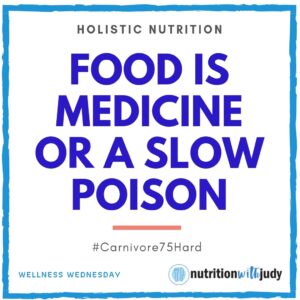

On a keto diet, the focus is on consuming foods that are high in healthy fats, moderate in protein, and very low in carbohydrates to maintain the state of ketosis, where the body burns fat for energy instead of glucose. Foods that are staples in a keto diet include:
- Fats and Oils: Sources such as butter, coconut oil, olive oil, and avocado oil are encouraged for their high-fat content.
- Proteins: Grass-fed meat, fatty fish (such as salmon and mackerel), poultry, and eggs are key for their moderate protein levels.
- Low-Carb Vegetables: Leafy greens (spinach, kale), above-ground vegetables (broccoli, cauliflower), and other low-starch vegetables are essential for their minimal carb content.
- Full-Fat Dairy: Cheese, heavy cream, and full-fat yogurt are included for their fat content, with a caution on carb levels.
- Nuts and Seeds: In moderation, due to their carb content, but valued for their healthy fats.
- Avocados: High in healthy fats and low in carbs.
Foods omitted from a ketogenic diet are those high in carbohydrates, including:
- Sugary Foods: Sodas, fruit juices, smoothies, cakes, ice creams, and candies.
- Grains and Starches: Wheat-based products, rice, pasta, cereals.
- Fruits: Most fruits are excluded due to high sugar content, except for small portions of berries.
- Beans and Legumes: Peas, kidney beans, lentils, chickpeas.
- Root Vegetables: Potatoes, sweet potatoes, carrots, parsnips.
- Low-Fat or Diet Products: Often high in carbs and processed.
- Certain Alcoholic Beverages: Beer and sugary mixed drinks.
Can You Eat Nuts On a Keto Diet?
Nuts are indeed permitted on a keto diet and are considered a valuable component due to their high-fat content, moderate protein, and low net carbohydrate levels, making them an ideal snack for maintaining ketosis. They are believed to provide a rich source of energy, essential fatty acids, and nutrients such as magnesium and vitamin E.
Varieties such as almonds, walnuts, and macadamias are especially popular for their low net carb content, allowing individuals to enjoy these foods without disrupting their metabolic state.
The Problems With Nuts
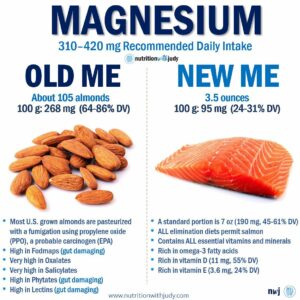

While nuts are celebrated for their nutritional benefits and compatibility with various dietary approaches, including the keto diet, they come with their own set of challenges that are often overlooked. One significant concern is the presence of anti-nutrients. Additionally, nuts are susceptible to contamination with mold and other toxins. Let’s take a closer look at these concerns.
Anti-Nutrients In Nuts
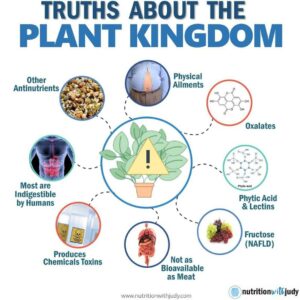

Nuts contain various anti-nutrients that can interfere with the body’s ability to absorb minerals and other nutrients effectively. These anti-nutrients include:
- Phytic Acid (Phytates): Predominantly found in the outer layer or bran of nuts, phytic acid is known for its mineral-binding properties. It can significantly reduce the absorption of iron, zinc, magnesium, and calcium by forming insoluble complexes with these minerals, making them unavailable for absorption. This is particularly concerning in plant-based diets where nuts are a primary source of these nutrients.
- Tannins: These are polyphenolic compounds that can impart a bitter taste to nuts. Tannins have the ability to bind proteins and other organic compounds including enzymes, rendering them inactive. Their protein-binding capacity can decrease the digestive efficiency and reduce the nutritional value of nuts.
- Oxalates: Found in varying levels in different nuts, oxalates can bind to calcium and form calcium oxalate, which is insoluble and can contribute to the formation of kidney stones in susceptible individuals. High oxalate levels can also inhibit the absorption of calcium, a critical mineral for bone health.
- Lectins: Present in all plant foods to some extent, lectins in raw nuts can bind to the intestinal lining, potentially leading to digestive discomfort and impaired nutrient absorption. Although cooking can inactivate some lectins, most nuts are consumed raw or lightly processed, which may not fully eliminate their lectin content.
You can reduce some of the effects of these anti-nutrients by using practices such as soaking, sprouting, or roasting nuts. However, there is no way to completely remove anti-nutrients from nuts.
Nuts and Mold Contamination
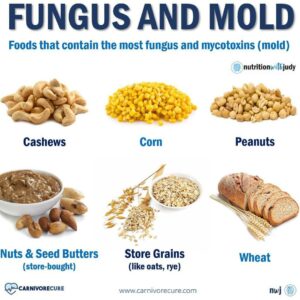

Nuts are susceptible to mold contamination primarily due to the conditions under which they are grown, harvested, stored, and transported. The warm, moist environments that favor nut growth also provide an ideal breeding ground for mold development. One of the most concerning aspects of mold presence in nuts is the production of aflatoxins and mycotoxins, potent carcinogens that pose serious health risks to humans and animals alike.
Aflatoxins, produced by certain strains of the Aspergillus fungus, are among the most toxic and extensively researched mycotoxins. They have been linked to liver cancer, immune system suppression, and growth impairment. Nuts, especially peanuts, almonds, and walnuts, can become contaminated with aflatoxins both before harvest and during storage, particularly if storage conditions are not strictly controlled to prevent moisture buildup.
Mycotoxins, another group of toxins produced by molds, can also contaminate nuts. These toxins can survive processing and cooking, making them a persistent risk for nut consumers. The health implications of mycotoxin exposure include gastrointestinal disturbances, acute poisoning, and long-term chronic illnesses.
Addressing these risks involves stringent quality control measures, including proper drying, storage, and regular testing of nut products for aflatoxins and other mycotoxins to ensure they meet safety standards. Consumers are advised to purchase nuts from reputable sources and store them properly to minimize the risk of mold contamination.
Nuts and Glyphosate Exposure


Glyphosate, a widely used herbicide, has been detected in various agricultural products due to its extensive application on crops for weed control. Its presence in nuts could be attributed to the use of glyphosate in or around areas where nut trees are grown, or through contamination from adjacent fields. The concern with glyphosate stems from research that has classified it as a probable human carcinogen, raising health concerns regarding its consumption, especially through foods that are integral parts of people’s diets, such as nuts.
The potential for nuts to contain glyphosate largely depends on agricultural practices, including the use of glyphosate in non-organic farming operations.
The Fatty Acid Content of Nuts
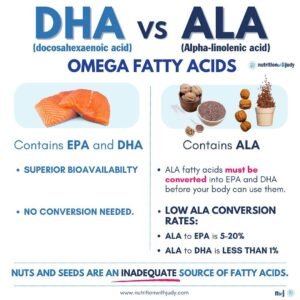

While nuts, particularly walnuts, are praised for their omega-3 fatty acid content, specifically alpha-linolenic acid (ALA), they are not the most bioavailable source of omega-3s for human consumption. The crux of the issue lies in the body’s ability to convert ALA into the more beneficial forms of omega-3 fatty acids—eicosapentaenoic acid (EPA) and docosahexaenoic acid (DHA). This conversion process is inefficient, with only a small fraction of ingested ALA being transformed into EPA and even less into DHA, the forms crucial for cognitive function, cardiovascular health, and anti-inflammatory benefits.
This inefficiency in conversion means that relying solely on nuts for omega-3 intake is unlikely to yield the full health benefits associated with EPA and DHA. The bioavailability of omega-3s from nuts is further complicated by factors such as individual differences in metabolism, the presence of other fats in the diet, and genetic variables, all of which can impact the rate and efficiency of ALA conversion.
For those looking to optimize their omega-3 levels, incorporating direct sources of EPA and DHA, such as fatty fish or high-quality supplements, is recommended to ensure adequate intake of these essential nutrients.
The Carnivore Diet vs. the Keto Diet
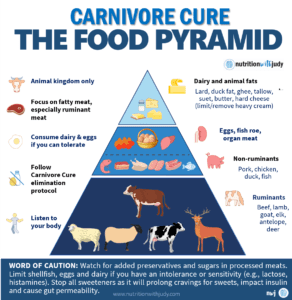

The carnivore diet, with its strict emphasis on animal-based foods, presents a unique approach to healing and managing chronic illness, distinguishing itself significantly from the keto diet. Unlike the keto diet, which allows for a broader range of food groups including nuts, dairy, and certain low-carb vegetables, the carnivore diet eliminates all potential food triggers by restricting consumption exclusively to meat, fish, and animal products. This elimination extends to nuts, which, despite being permitted on a keto diet, can be problematic due to their anti-nutrient content, potential for mold contamination, and the presence of glyphosate, a known carcinogen.
The rationale behind the carnivore diet’s effectiveness in supporting individuals with chronic illnesses lies in its elimination of all plant-based foods, which can contain anti-nutrients that interfere with nutrient absorption, and compounds that may trigger immune responses or inflammation in susceptible individuals. By focusing solely on animal products, the carnivore diet reduces the dietary variables that can contribute to food sensitivities, autoimmune flare-ups, and other chronic health issues. This simplification allows individuals to more easily identify foods that support their health without the complications of managing and balancing a wider range of food groups.
Animal-based foods provide high levels of bioavailable nutrients, including essential fatty acids, vitamins, and minerals, without the anti-nutrients found in plant foods that can bind these nutrients and prevent their absorption. This focus on nutrient-dense, bioavailable food sources makes the carnivore diet particularly appealing for those seeking root-cause solutions to health issues, as it supports the body’s healing processes more directly than diets with a broader range of permissible foods.
The carnivore diet’s stringent exclusion of potential dietary triggers, including nuts and all plant-based foods, alongside its emphasis on highly bioavailable nutrients, positions it as an ideal dietary approach for individuals looking to manage or heal from chronic illnesses by minimizing dietary complications and maximizing nutrient intake.
Closing Thoughts for the Carnivore Diet and Nuts On a Keto Diet
Throughout our exploration of nuts on a keto diet and the contrast with the carnivore diet, several key insights emerge. While nuts are permissible on a keto diet due to their high fat, moderate protein, and low net carb content, they come with caveats. Anti-nutrients such as phytic acid, present in nuts, can hinder mineral absorption, challenging the nutritional efficiency of a keto diet. Additionally, nuts’ susceptibility to mold contamination and potential glyphosate residues raises concerns about their overall safety and health implications.
Comparatively, the carnivore diet offers a distinct approach by eliminating all potential food triggers, including nuts. This elimination strategy is particularly beneficial for individuals dealing with chronic illnesses, as it reduces the variables that might contribute to inflammation, autoimmune responses, and nutrient absorption issues. The carnivore diet’s focus on animal-based foods ensures a high intake of bioavailable nutrients without the anti-nutrients found in plant foods, making it an appealing option for those seeking to support their body’s healing processes.
While nuts can be a part of a keto diet, their inclusion requires careful consideration of potential drawbacks. The carnivore diet, by excluding nuts and all plant-based foods, presents a simplified and potentially more effective dietary approach for healing and managing chronic health issues.
Work With Our Trusted Carnivore Diet Functional Nutritional Therapy Practitioners
The Nutrition with Judy practice is honored to be a trusted carnivore diet practitioner support serving clients from around the globe. We’re passionate about helping our clients achieve root-cause healing in order to lead the best quality of life possible that’s nearly symptom-free. Our team is dedicated to helping our clients find the ideal diet and tools for optimal healing. We welcome you to explore our free resources and are always available to support you through personalized protocols. Our Symptom Burden Assessment (SBA) is the perfect starting point for discovering your root cause and is required to work with our team— you can learn more in-depth about this powerful tool here.
Start your root-cause healing journey today and contact us any time with any questions or concerns.
DISCLAIMER: This content is for educational purposes only. While we are board-certified in holistic nutrition and are nutritional therapy practitioners, we are not providing medical advice. Whenever you start a new diet or protocol, always consult with your trusted practitioner first.



